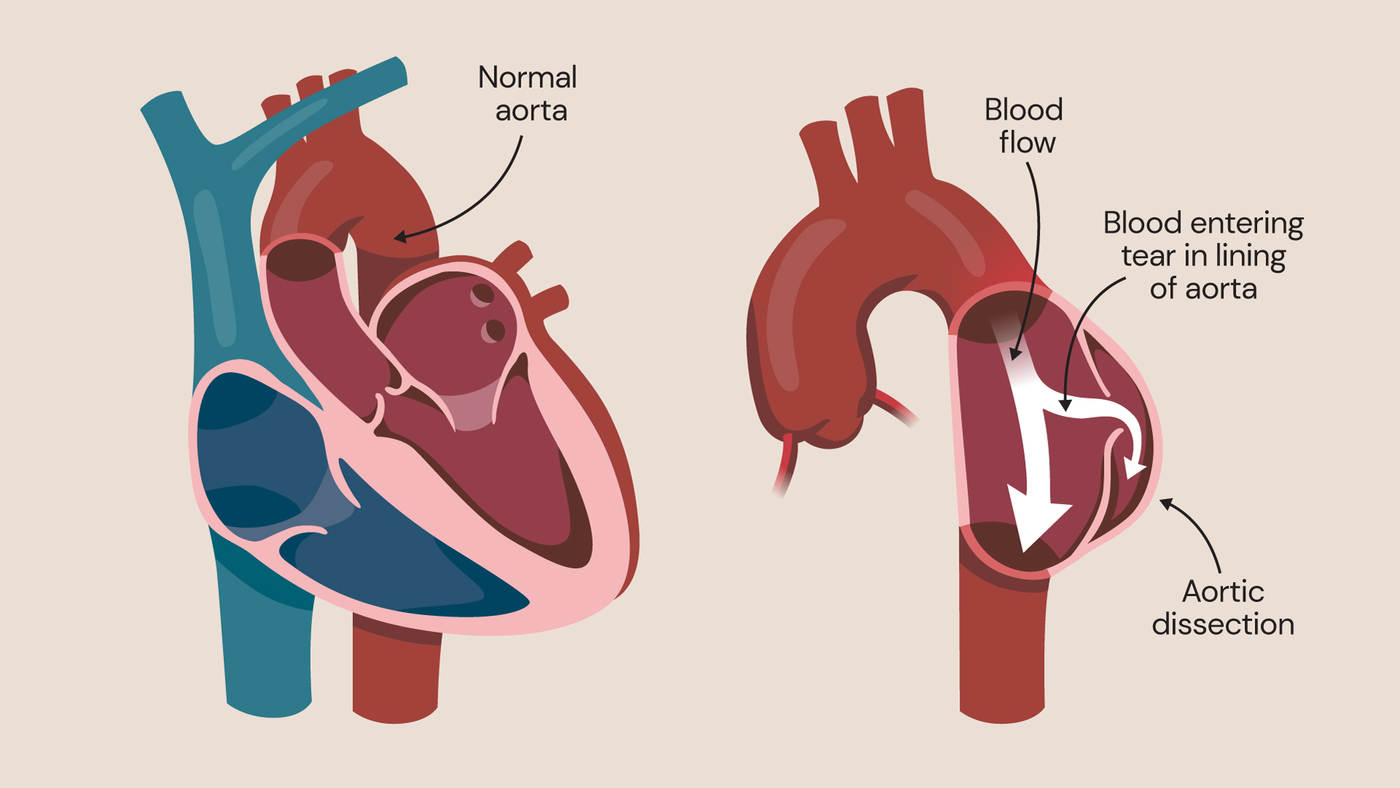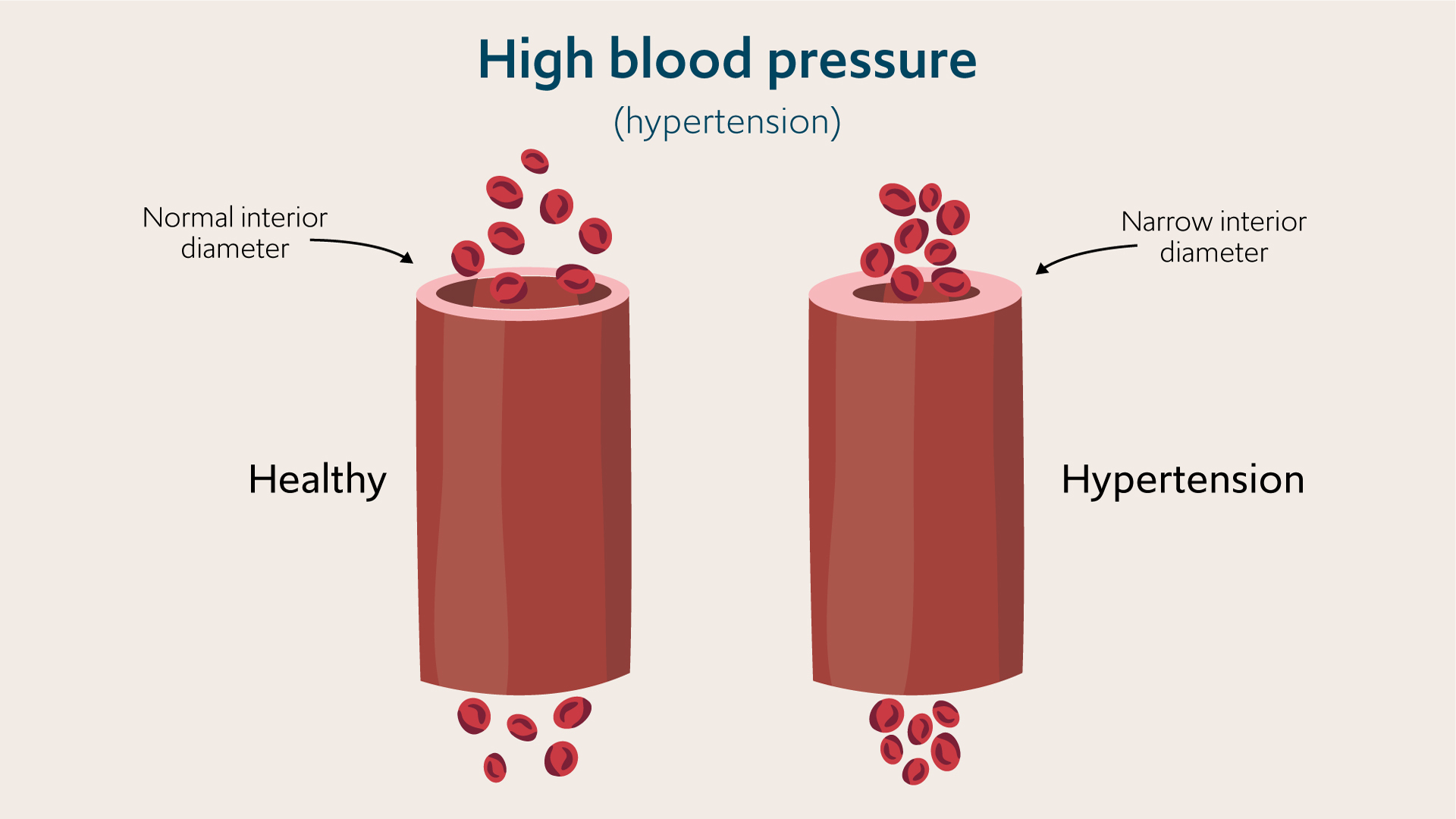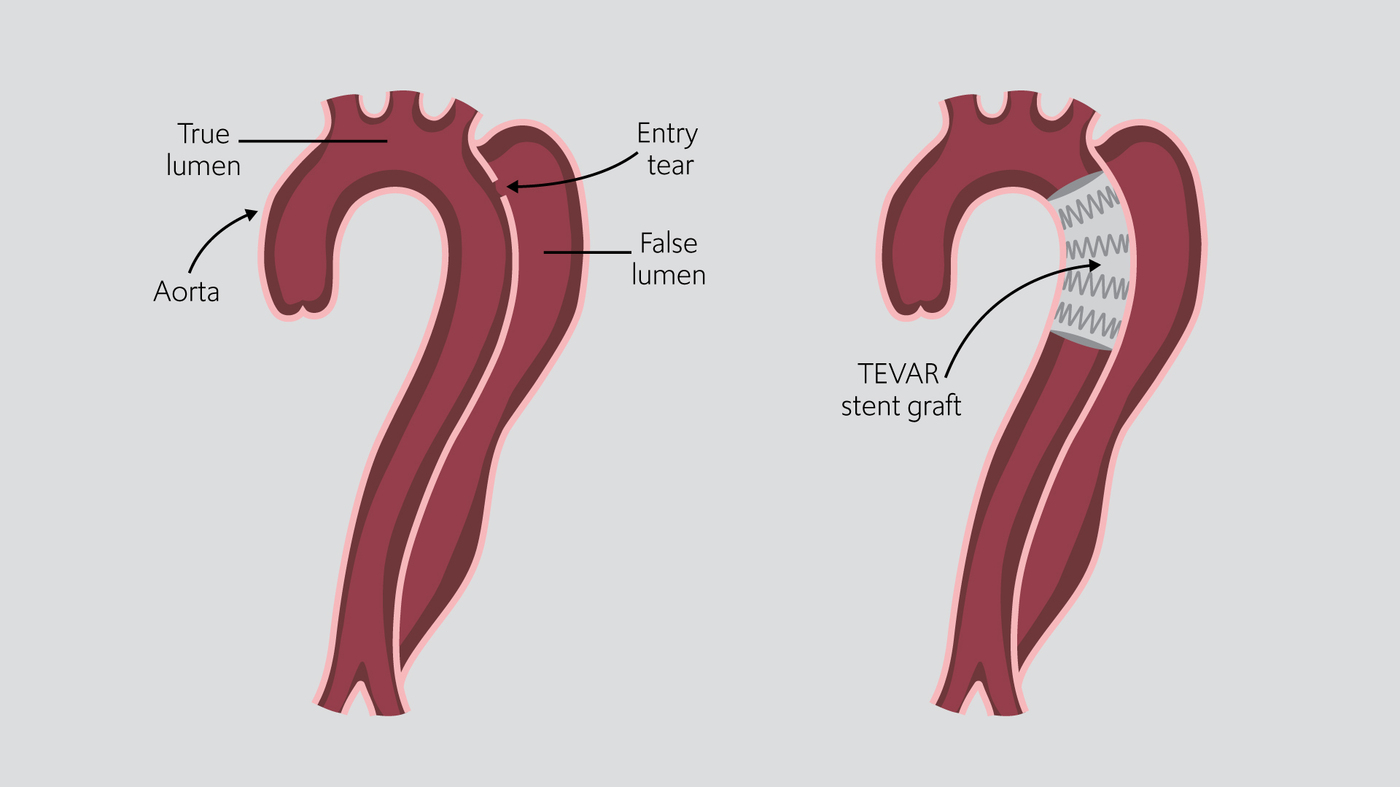What is aortic dissection?
Aortic dissection is when the aorta (the body’s main artery) tears. It is a serious condition that involves a tear in the aorta’s inner layer (intima), causing blood to rush through. This results in a split between the inner and middle layers (media) of the aorta. Aortic dissection can be deadly if blood comes through the outer aortic wall.
The condition is rare; affecting 3 or 4 people in 100,000 each year in the UK. It is most common in men aged 60 and over.

Type A aortic dissection is when the aorta tears and causes blood to rush through.
Aortic dissection types
There are two types of aortic dissection:
- type A
- type B
Type A aortic dissection
This is caused by a tear in the first, curved part of the aorta closest to the heart in the chest. The risk of type A aortic dissection is high. Surgery is usually needed to repair the aorta and an aortic valve replacement may also be required.
Type B aortic dissection
This is a tear in the lower part of the aorta that is further away from the heart and originates in the part of the aorta that passes through the chest and abdomen. Type B has a lower risk and may not require you to have open surgery immediately. Medications that lower blood pressure may be used to manage the condition initially, followed by an assessment for key-hole procedures.
Aortic dissection symptoms
The symptoms of aortic dissection are similar to signs of other acute heart problems. They may include:
- sudden severe chest pain which spreads to the neck or back
- sudden intense stomach pain
- shortness of breath
- loss of consciousness
- vision problems
- loss of movement or weakness on one side of the body
- difficulty speaking
- difficulty walking
- leg pain
- a weaker pulse in one arm
If you experience symptoms such as sudden severe chest pain, shortness of breath or intermittent fainting, call 999 immediately. These may not be the symptoms of a serious condition, but you should be checked by a medical professional as soon as possible.
What causes aortic dissection?
An aortic dissection is caused by a weakening of the aortic wall, by rupturing in the inner layer, in a particular area. Some risk factors may increase your chances of getting an aortic dissection. You may be more likely to have an aortic dissection if you have:
- high blood pressure
- an aortic valve defect
- aortic coarctation (narrow aorta from birth)
- hardened arteries
- an aortic aneurysm (an aorta that is weak and bulging)
- a genetic disorder such as Marfan syndrome or Loeys-Dietz syndrome
You may also be likely to have aortic dissection if you:
- are aged 60 and over with hypertension
- are pregnant
- do high-intensity weight training
- are male
- use recreational drugs

Hypertension (high blood pressure) is caused by a narrowing in the blood vessels which leads to reduced blood flow.
Diagnosing aortic dissection
At the initial stage, your healthcare provider for acute care (in A and E) will perform a physical examination, ask questions about your symptoms and review your medical history. Symptoms which may indicate aortic dissection to your doctor include:
- a ripping or tearing pain in your chest
- a difference in blood pressure between your arms
- a widened aorta
Diagnostic tests may be ordered swiftly to identify the issue or rule it out, such as:
- computed tomography (CT) scan of the chest
- magnetic resonance angiogram (MRA)
- surface or transesophageal echocardiogram (TTE/TEE)
Aortic dissection treatment
The treatment for aortic dissection will depend on the type of dissection.
Type A aortic dissection requires surgery to remove the dissected aorta and prevent blood from leaking into the aortic wall. This may involve a reconstruction of the aorta with a graft, or an aortic valve replacement or repair. Medications will be given to lower blood pressure and reduce heart rate, this can stop the aortic dissection from getting worse.
Type B aortic dissection may require an intervention (keyhole access) if the dissection is cutting off blood flow to parts of the body such as the intestines, kidneys, spinal cord or legs. Procedures will be different to those required for a Type A aortic dissection. Less severe cases may initially only require medications to lower blood pressure and reduce heart rate, followed by an assessment for suitability for endovascular repair.
Treatment options for Type B aortic dissection include:
- TEVAR procedure
- PETTICOAT procedure (TEVAR and bare stent)
- FLIRT procedure
- open heart surgery and frozen elephant trunk
Open heart surgery
This procedure involves an incision being made in the chest or abdomen (depending on the location of the dissection). A heart bypass machine will be used to pump blood temporarily. A graft will replace the damaged sections of the aorta, including insertion of a surgical stent graft/frozen elephant trunk. The heart bypass machine can then be removed and the incisions closed.
TEVAR procedure
While open surgery continues to be a rare option for treating aortic dissection, there are now advanced, minimally invasive surgeries which offer benefits such as a shorter procedure and recovery time.
One of these newer methods is thoracic endovascular aortic repair (TEVAR) procedure. It involves the cardiologist guiding a catheter with a synthetic graft attached through a small incision in your leg. The catheter is guided through the artery to the affected part of the aorta. X-ray with a contrast agent and transesophageal ultrasound can be used to help place the graft in the correct position before the catheter is removed and the incision in the groin is closed.
TEVAR is preferred to open surgery as it provides a much lower risk for the patient compared to open surgery.

The TEVAR procedure treat aortic dissection by placing a synthetic graft using a catheter.
FLIRT procedure
False Lumen Intervention for the promotion of Remodelling and Thrombosis (FLIRT) is a new treatment pioneered by our cardiologist consultant Professor Christoph Nienaber. This minimally invasive procedure uses advanced imaging techniques to guide a catheter through an artery in the arm or groin, directly to the affected part of the aorta. The FLIRT procedure seals the tear and stops from blood flowing into the abnormal channel in the aorta wall (false lumen) even after a preceding TEVAR procedure and evidence of false channel flow.
FLIRT is a complex procedure that requires work between the delicate layers of the aorta wall. It can be used following TEVAR or another type of surgery, to seal a residual tear.
Locations
Diagnosis and treatment for aortic dissections are available at the following locations:
Explore our team of cardiology specialists
Our dedicated specialists, who have experience in treating patients with a range of conditions, can help with your cardiology concerns.
